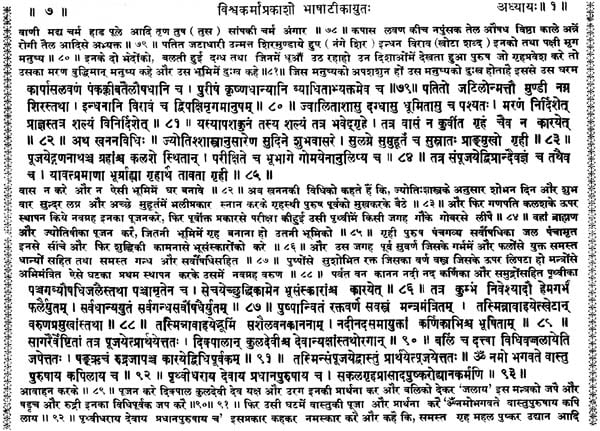Vishwakarma Vastu Shastra Pdf In English

Numerology-magic-pdf-178174.pdf - Jain Vaasu Shastra,Jain Astrology,Jain Vastu Vigyan,Jain Numberology * Magic Of Numerology in Vaastu ( Vastu) Science * Vastu (Vaastu) Doshas and Numerological relation Download our vishwakarma vastu eBooks for free and learn more about vishwakarma vastu.
Contents • • • • • • • • • • Terminology [ ] The Sanskrit word vastu means a dwelling or house with a corresponding plot of land. The, vāstu, takes the meaning of 'the site or foundation of a house, site, ground, building or dwelling-place, habitation, homestead, house'. The underlying root is vas 'to dwell, live, stay, reside'. The term may loosely be translated as 'doctrine, teaching'.
Vastu-Sastras (literally, science of dwelling) are ancient Sanskrit manuals of architecture. These contain Vastu-Vidya (literally, knowledge of dwelling). History [ ] Proposals tracing potential links of the principles of composition in Vastu Shastra and the have been made, but is reluctant to speculate on such links given the Indus Valley script remains undeciphered. According to Chakrabarti, Vastu Vidya is as old the Vedic period and linked to the ritual architecture. According to, the contains verses with mystic cosmogony which provide a paradigm for cosmic planning, but they did not represent architecture nor a developed practice. 's Brihat Samhita dated to the sixth century CE, states Meister, is the first known Indian text that describes 'something like a vastupurusamandala to plan cities and buildings'.
Contoh soal tes toefl dan pembahasan pdf to word. The emergence of Vastu vidya as a specialized field of science is speculated to have occurred significantly before the 1st-century CE. Description [ ]. Ancient India produced many Sanskrit manuals of architecture, called Vastu Sastra. Many of these are about Hindu temple layout (above), design and construction, along with chapters on design principles for houses, villages, towns. The architect and artists (Silpins) were given wide latitude to experiment and express their creativity.
There exist many Vastu-Sastras on the art of building houses, temples, towns and cities. One such Vastu Sastra is by, describing where and how temples should be built.
By 6th century AD, Sanskrit manuals for constructing palatial temples were in circulation in India. Vastu-Sastra manuals included chapters on home construction, town planning, and how efficient villages, towns and kingdoms integrated temples, water bodies and gardens within them to achieve harmony with nature. While it is unclear, states Barnett, as to whether these temple and town planning texts were theoretical studies and if or when they were properly implemented in practice, the manuals suggest that town planning and Hindu temples were conceived as ideals of art and integral part of Hindu social and spiritual life. Maserati vx1 vocal enhancer free download free. The Silpa Prakasa of Odisha, authored by Ramachandra Bhattaraka Kaulachara sometime in ninth or tenth century CE, is another Vastu Sastra.
Silpa Prakasa describes the geometric principles in every aspect of the temple and symbolism such as 16 emotions of human beings carved as 16 types of female figures. These styles were perfected in Hindu temples prevalent in eastern states of India.
Other ancient texts found expand these architectural principles, suggesting that different parts of India developed, invented and added their own interpretations. For example, in Saurastra tradition of temple building found in western states of India, the feminine form, expressions and emotions are depicted in 32 types of Nataka-stri compared to 16 types described in Silpa Prakasa. Silpa Prakasa provides brief introduction to 12 types of Hindu temples. Other texts, such as Pancaratra Prasada Prasadhana compiled by Daniel Smith and Silpa Ratnakara compiled by Narmada Sankara provide a more extensive list of Hindu temple types. Ancient Sanskrit manuals for temple construction discovered in Rajasthan, in northwestern region of India, include Sutradhara Mandana's Prasadamandana (literally, manual for planning and building a temple) with chapters on town building. Manasara shilpa and Mayamata, texts of South Indian origin, estimated to be in circulation by 5th to 7th century AD, is a guidebook on South Indian Vastu design and construction.